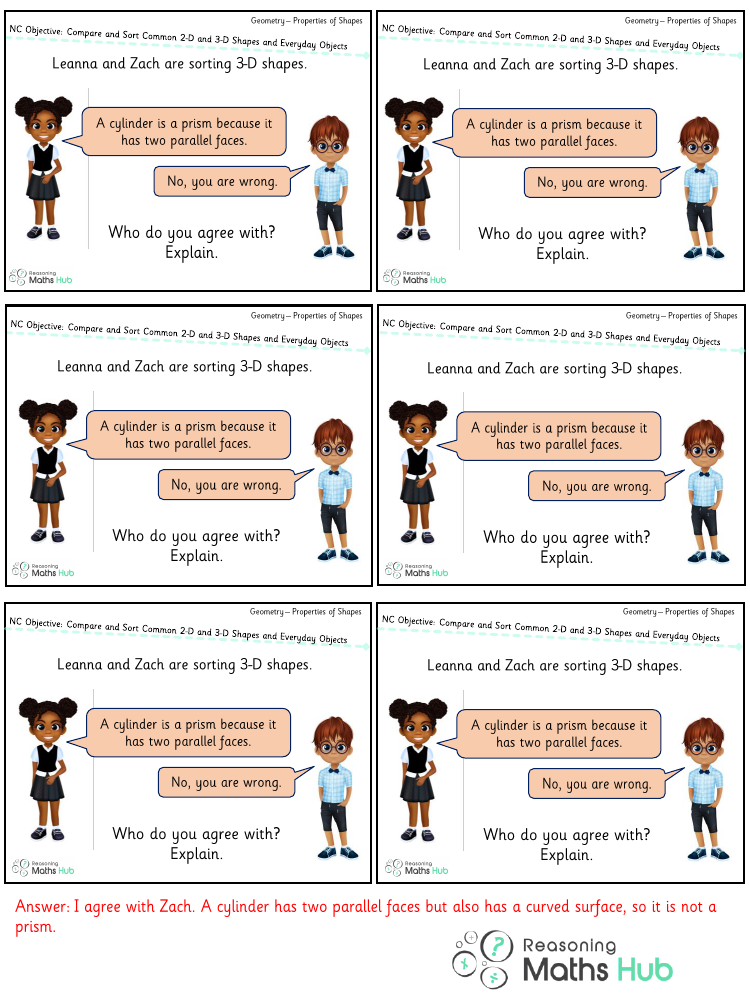Compare and sort common 2d and 3d shapes and everyday objects 2 - Reasoning

Maths Resource Description
In the realm of geometry, comparing and sorting common 2D (two-dimensional) and 3D (three-dimensional) shapes alongside everyday objects is a fundamental skill that enhances spatial awareness and cognitive development. This activity involves reasoning, a key aspect of mathematical understanding, where students are encouraged to identify and articulate the similarities and differences between various shapes. When comparing 2D shapes, such as squares, circles, triangles, and rectangles, students look at attributes like the number of sides, lengths of sides, angles, and symmetry. For 3D shapes, such as cubes, spheres, cylinders, and pyramids, they consider factors like faces, edges, vertices, and the shape of the base.
Sorting these shapes and objects requires students to apply their reasoning skills to categorise them based on their properties. For example, they might sort shapes into 'shapes with curved surfaces' and 'shapes with flat surfaces' or group objects by the number of vertices they have. Everyday objects provide a tangible context for these concepts, allowing students to relate geometric principles to the world around them. Through these activities, students not only learn to recognise and name shapes but also develop a deeper understanding of how shapes form the building blocks of complex structures and objects they interact with daily.
